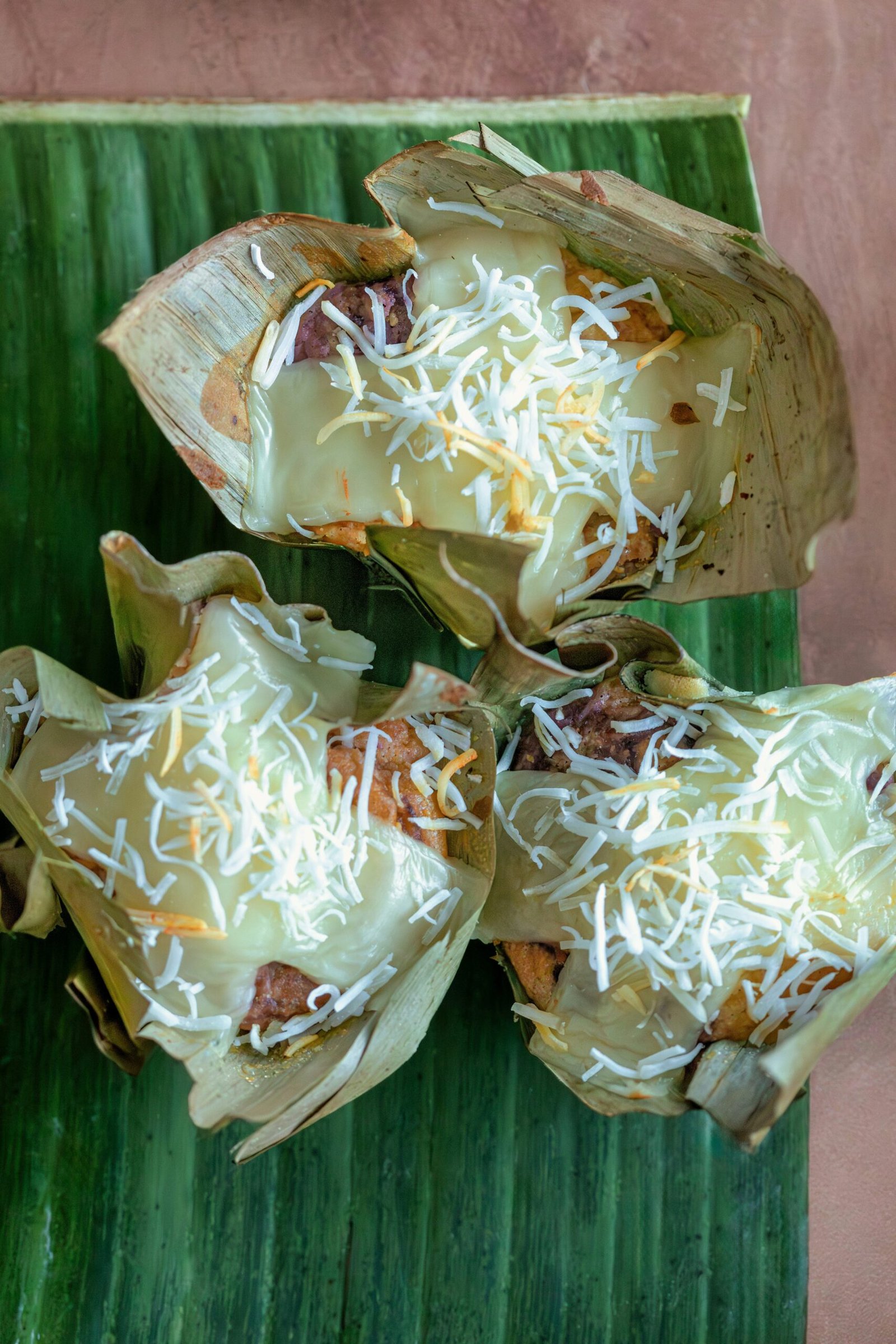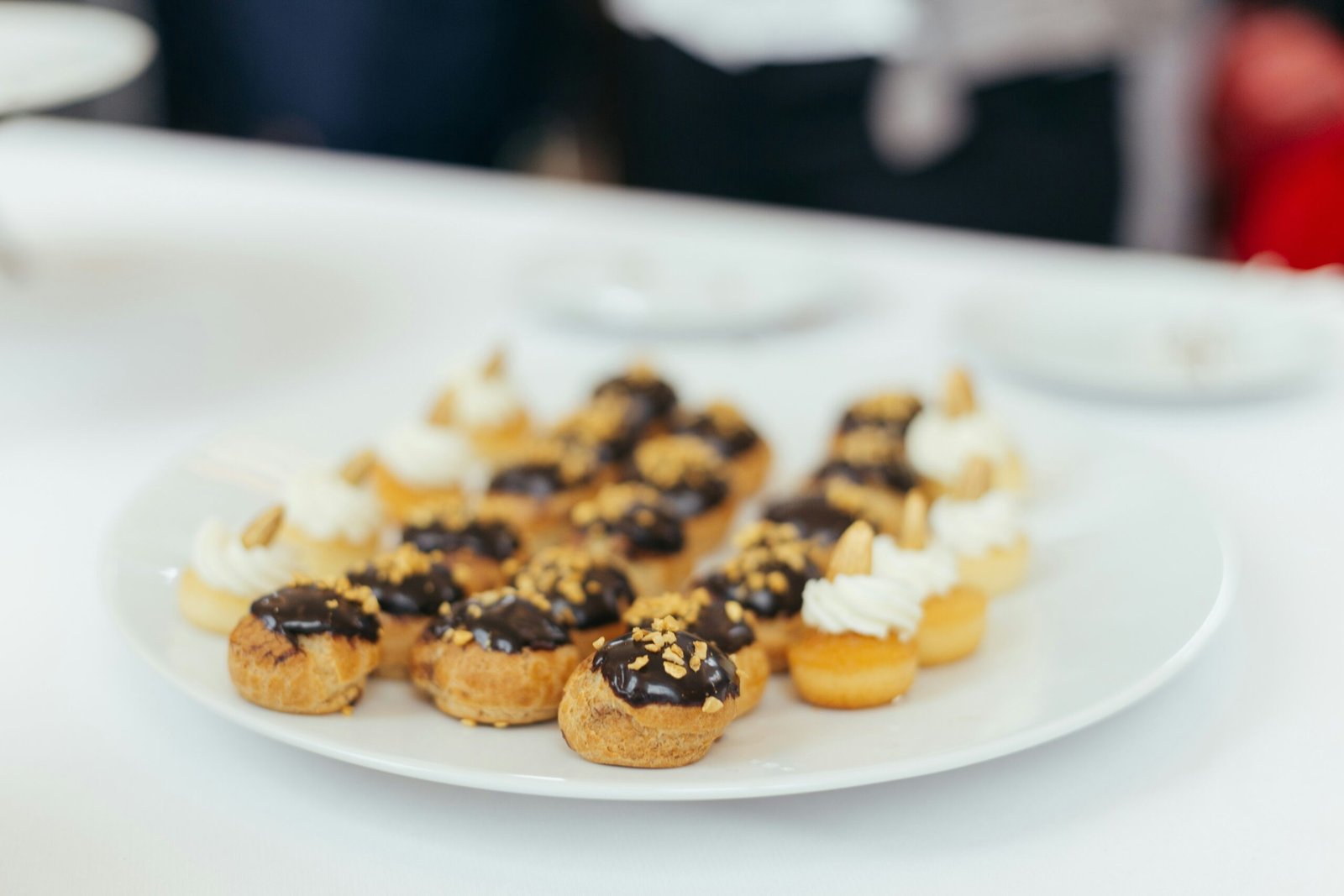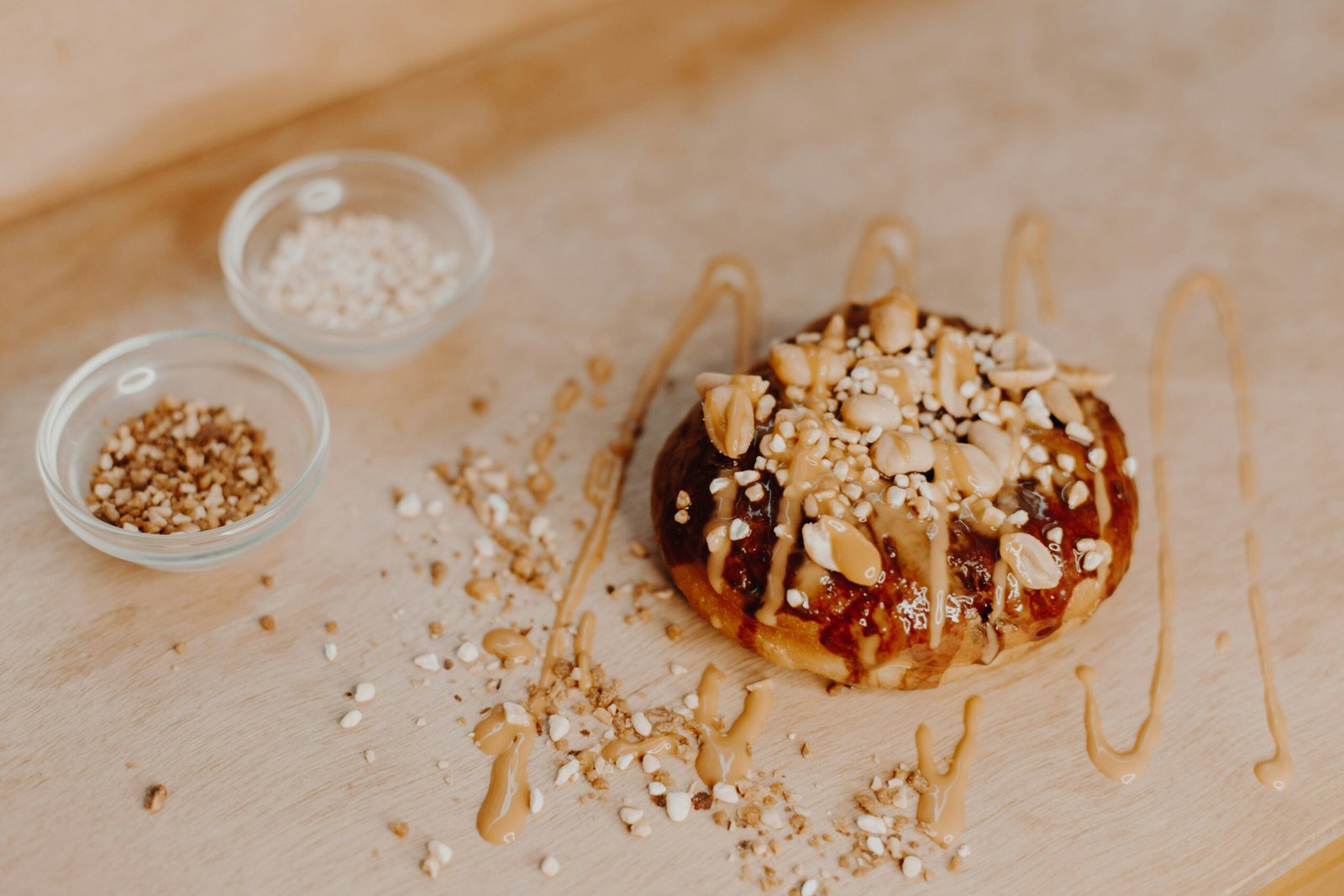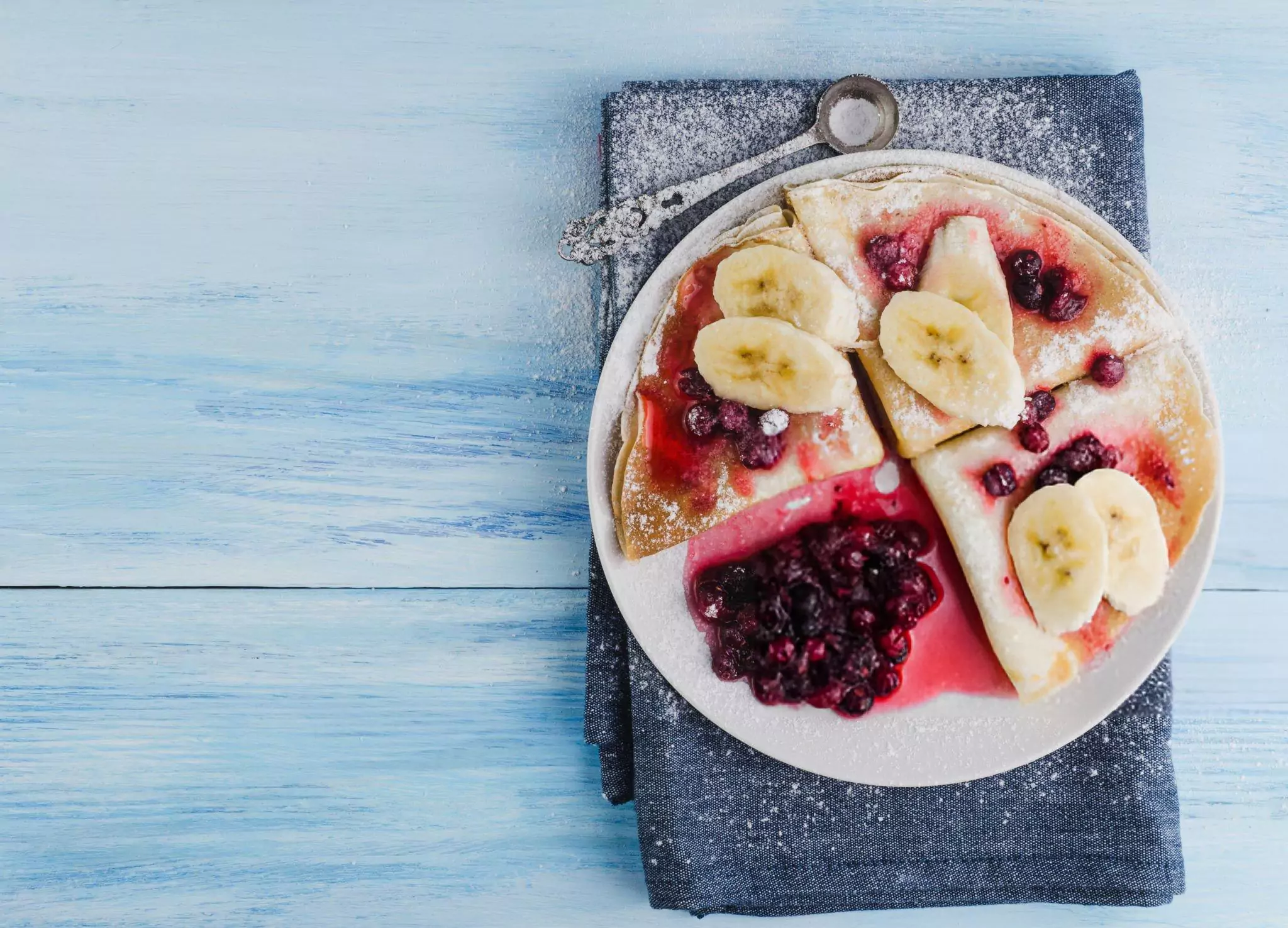Introduction to Layered Desserts
Layered desserts represent a delightful fusion of art and culinary skills, captivating the senses through both visual appeal and an array of flavors. Their unique structure—comprising multiple components stacked in harmonious layers—creates a stunning presentation that can elevate any gathering. Be it a formal dinner party or a casual family gathering, these desserts have an innate ability to impress guests, making them a favored choice among hosts.
The allure of layered desserts lies in their versatility. From classic combinations such as chocolate and vanilla to adventurous mixes incorporating fruits, creams, and even sauces, the options seem limitless. Each layer can introduce distinct textures, such as crunchy bases, smooth mousses, or creamy custards, allowing the dessert to engage the palate in a symphony of taste experiences. This complexity adds to their charm and invites creativity in the kitchen.
Moreover, the visual presentation of layered desserts is peerless. A well-constructed layered dessert not only tastes exquisite but also carries the potential to be the centerpiece of any table setting. Through clear glass dishes or individual servings in jars, the vivid colors and contrasting textures become an inviting canvas that draws attention and admiration. This presentational quality is particularly appealing when hosting events where food becomes an integral part of the aesthetic experience.
In recent years, the trend has expanded to include various international interpretations, such as trifles, parfaits, and tiramisus, each adding their own unique cultural twist. The layering technique also allows for stylish customization, accommodating dietary preferences or seasonal ingredients, which further enhances their appeal. As we explore detailed recipes, we will appreciate not only the flavors but also the craftsmanship that goes into creating these stunning creations.
Essential Techniques for Perfect Layers
Creating impressive layered desserts requires a combination of skill and the right techniques. The first essential technique is to achieve even layering. To do this, it is crucial to ensure that each layer has a uniform thickness, which can be achieved using measuring tools such as a kitchen scale or a ruler. Precision is key; uneven layers not only affect the aesthetics but can also impact how the flavors meld together.
Using clear containers is another effective method for showcasing your beautifully crafted layers. Transparent glasses or jars allow your guests to appreciate the intricate patterns you’ve created. When choosing your vessel, consider the shape and size. Tall glasses can enhance the visual appeal of your dessert by showcasing multiple layers, while shorter containers might work well for denser desserts. Furthermore, using piping bags for layered fillings can help you achieve clean lines, ensuring that each layer is distinct and visually pleasing.
Chilling desserts is an important step to maintain the integrity of the layers. It allows the ingredients to set properly, preventing them from mixing as they would if served immediately. Make sure to chill each layer before adding the next; this not only ensures that the layers hold their shape, but it also enhances the overall texture of the dessert. A refrigerator is typically sufficient, but for certain recipes, a brief spell in the freezer may be beneficial.
In terms of tools and equipment, investing in a few essentials can help elevate your layering technique. A good quality offset spatula is ideal for smoothing out layers, while a rolling pin can aid in achieving an even spread when preparing crusts or bases. Additionally, silicone molds can be useful for more intricate designs. By incorporating these techniques and tools, you can create stunning layered desserts that will undoubtedly impress your guests.
Trendy Trifle Recipes for Elegant Occasions
Trifles are an excellent choice for elegant occasions, combining flavors, textures, and vibrant colors in a stunning display. Whether you’re hosting a dinner party or celebrating a special event, these enchanting dessert recipes will undoubtedly impress your guests. Below, we present a selection of trendy trifle recipes that incorporate seasonal fruits and flavored cream layers to create a perfect balance of richness and lightness.
One popular option is the **Berry Bliss Trifle**, which features layers of mixed seasonal berries such as strawberries, blueberries, and raspberries. Start by preparing a light vanilla custard using eggs, sugar, and milk, ensuring it’s smooth and creamy. Alternate these layers with angel food cake or store-bought sponge cake soaked in a splash of berry-infused syrup. To finish, garnish with a cloud of whipped cream and a sprinkle of fresh mint leaves for added elegance.
For those with dietary restrictions, consider a **Vegan Chocolate Trifle**. This dessert uses layers of dairy-free chocolate mousse made from blended silken tofu, cocoa powder, and a sweetener of your choice. Incorporate layers of gluten-free chocolate cake as the base, followed by dairy-free whipped coconut cream. Add a layer of chopped seasonal fruits like bananas or mangoes for a refreshing contrast. This dessert is both delicious and accommodating, ensuring that all guests can indulge.
Another innovative dessert to try is the **Citrus Delight Trifle**. Combining layers of tangy lemon curd, fresh oranges, and a light cream made from mascarpone cheese and whipped cream, this dish offers a refreshing taste that balances richness and brightness. Layer the ingredients in a clear glass dish, showcasing the beautiful colors, and finish with a zest of citrus on top.
These trendy trifle recipes exemplify how to create stunning desserts that are visually appealing while keeping in mind various dietary needs. By using seasonal ingredients, you cater to both tastes and aesthetics, ensuring that the trifles you present at your next gathering will be a delightful experience for your guests.
Delicious Parfaits: A Layered Treat for Any Time
Parfaits are versatile layered desserts that can easily elevate any meal, whether as a breakfast option or a delightful after-dinner treat. The beauty of parfaits lies in their flexibility; they can be tailored to incorporate various flavors, textures, and seasonal ingredients. To create a stunning parfait, it is essential to choose complementary components that harmonize well with one another.
One popular breakfast parfait is the yogurt and granola parfait. Start with a base layer of creamy Greek yogurt, then add a layer of crunchy granola, followed by fresh fruits such as berries or banana slices. This combination not only provides a nutritious start to the day but also offers a pleasing contrast of textures. For added flavor, drizzling honey or a sprinkle of cinnamon can enhance the natural sweetness of the fruits and emphasize the earthiness of the granola.
For a dessert version, consider a chocolate and berry parfait. Layer layers of chocolate mousse with mixed berries such as strawberries, raspberries, and blueberries, and finish it off with a dollop of whipped cream. To elevate presentation, serve in clear glasses to showcase the beautiful layers, and garnish with a mint leaf for a pop of color. The rich, decadent chocolate pairs exquisitely with the tartness of the berries, creating a delightful culinary experience.
When it comes to layering, it is advisable to begin with heavier ingredients at the bottom, gradually transitioning to lighter components to maintain stability. Each layer should be evenly distributed, ensuring visual appeal. Additionally, consider using different glass or jar shapes to add an artistic flair to your presentation. The joy of parfaits lies in their rich flavors and creative potential that encourages culinary experimentation.
Mille-Feuille: The Classic French Layered Dessert
Mille-feuille, also known as the “Napoleon,” is a timeless French dessert that showcases the art of layering through its delicate puff pastry and creamy custard. This classic pastry consists of three layers of puff pastry interleaved with two layers of rich pastry cream, topped with a slather of icing. To achieve a memorable mille-feuille, it’s essential to master the puff pastry, a critical component that provides the structure and texture of the dessert.
To begin, gather the necessary ingredients. For the puff pastry, you will need 250 grams of all-purpose flour, a pinch of salt, 125 grams of unsalted butter (cold and cubed), and 90 ml of cold water. For the pastry cream, prepare 500 ml of whole milk, 120 grams of granulated sugar, 4 egg yolks, 40 grams of cornstarch, and 50 grams of unsalted butter. Optional toppings can include powdered sugar or fondant icing.
The preparation of the puff pastry starts with creating a dough by mixing flour and salt in a bowl. Cut cold butter into the flour until the mixture resembles coarse crumbs. Gradually add cold water to form a cohesive dough. Wrap the dough in plastic wrap and chill it for at least one hour. After chilling, roll the dough out into a rectangle, perform a series of folds, and chill again to create multiple layers. This technique allows the pastry to puff beautifully during baking.
Next, prepare the pastry cream by heating the milk until it simmers. In a separate bowl, whisk together the sugar, egg yolks, and cornstarch until well combined. Gradually pour the hot milk into the egg mixture while continuously whisking. Return the mixture to the heat and stir until thickened. Remove from heat and stir in the butter until melted and smooth.
To assemble the mille-feuille, bake the puff pastry until golden brown and crispy, then allow it to cool. Once cooled, cut the pastry into equal rectangles. Layer the pastry with pastry cream in between each sheet. Finish with the top layer dusted with powdered sugar or a glaze of icing for an appealing presentation. The final result is a stunning dessert that will impress your guests, showcasing the elegance of traditional French pastries. Enjoy this layered delight with confidence, knowing that the art of mille-feuille is within your reach.
Flavor Pairing Ideas for Layered Desserts
Layered desserts offer an exquisite opportunity to explore various flavor pairings that create harmonious and visually appealing treats. The right combination of flavors can elevate a simple dessert into a sophisticated centerpiece that delights the palate. Traditional pairings often serve as the foundation for many layered desserts, but there is a wealth of unique options available for those who wish to experiment.
Begin with classic combinations that have stood the test of time. Chocolate and raspberry are a prime example, where the rich, slightly bitter notes of dark chocolate blend beautifully with the tartness of fresh raspberries. Adding complementary textures, such as a smooth ganache or a light mousse, enhances this combination, making it a favorite among dessert connoisseurs. Similarly, vanilla and berry variations can introduce both sweetness and refreshing acidity, resulting in a delightful burst of flavors.
For a more adventurous approach, consider incorporating unconventional pairings such as matcha and vanilla. The earthy notes of matcha powder combined with creamy vanilla create a sophisticated flavor profile that is both unique and appealing. This combination also allows for stunning visual layers when layered with light whipped cream or rich custard. For those seeking an indulgent twist, a salted caramel layer with layers of chocolate or pecans can produce a decadent experience, attracting those who enjoy contrasting sweet and salty flavors.
In addition, citrus elements such as lemon or lime can brighten up layered desserts. Pairing lemon curd with a rich mascarpone or coconut cream introduces a refreshing balance and lightness. Lastly, do not shy away from spices; a hint of cardamom or ginger can elevate a standard layered dessert, imparting warmth and complexity. Ultimately, the key to crafting memorable layered desserts lies in the exploration of varied flavor pairings, allowing each creator to develop their own signature combinations that impress guests.
Textural Elements: Adding Crunch and Creaminess
The art of creating layered desserts goes beyond flavor; it also hinges significantly on textural contrast. When guests indulge in a layered dessert, they expect a delightful combination of textures that enhance the overall eating experience. The harmonious interplay between crunch, creaminess, and softness can elevate a simple dessert into a sophisticated culinary delight.
To achieve this balance, consider incorporating various base layers that contribute distinct textures. Crumbled cookies provide a delightful crunch and can be easily customized with different flavors, such as chocolate, vanilla, or ginger. Alternatively, sponge cake serves as a softer foundation that absorbs moisture from the fillings, resulting in a light and airy base. Granola is another excellent option that infuses each bite with a satisfying crunch and can introduce additional flavors such as honey or nuts.
In terms of creamy fillings, options abound. Traditional choices might include whipped cream, pastry cream, or mousse, which all deliver a rich, velvety texture. For a healthier alternative, yogurt or mascarpone can be mixed with fruit purees to create a creamy filling that is both indulgent and lighter on the palate. The key lies in the integration of these creamy elements; they should complement the crunchiness of the base without overwhelming it.
Finally, don’t forget to select an eye-catching crunchy topping. Nuts, chocolate shavings, or toasted coconut not only enhance the visual appeal but also add a final layer of texture that culminates the dessert experience. When assembling the layers, consider the order in which they will be combined, as this can dramatically affect how those textures are perceived by the palate. With careful thought and planning, the incorporation of various textural elements will leave a lasting impression on your guests, ensuring they savor each delightful bite.
Presentation Tips: Making Your Desserts Instagram-Worthy
The presentation of a dessert can make a significant difference in how it is perceived by guests and followers on social media. A visually stunning layered dessert not only tantalizes the taste buds but also engages the eyes, making it more appealing. To achieve this, consider various garnishing techniques that can elevate your dessert’s appearance. Fresh fruits, edible flowers, or a sprinkle of nuts can add texture and color to your creation. For instance, a layer of whipped cream topped with berries can provide a burst of freshness and contrast against rich, darker elements of the dessert.
Moreover, the choice of plate or dish also contributes to the overall presentation. Using elegant plates or contemporary glassware can enhance the aesthetic appeal of your layered dessert. Clear glass cups or jars serve a dual purpose: they allow the beautiful layers of the dessert to be showcased while adding a modern touch to the table setting. When arranging your dessert, follow the rule of thirds; this composition technique helps create a balanced and pleasing visual effect.
Lighting plays an essential role in photography, especially when aiming to capture the essence of your desserts for social media. Natural light is the best choice for photographing desserts, as it minimizes harsh shadows and highlights the vibrant colors of the ingredients. Position your dessert near a window during the golden hour for the most flattering illumination. Experiment with different angles; overhead shots often work well to showcase multiple layers, while side views can emphasize height and texture. Lastly, don’t forget to incorporate elements such as napkins, utensils, or a stylish backdrop to create context in your images.
By using these presentation tips, you can make your layered desserts not only delicious but also a feast for the eyes. Remember, a well-presented dessert will captivate your guests and leave a lasting impression, encouraging them to share your creations online.
Conclusion: Mastering the Art of Layered Desserts
Layered desserts represent not only a visual feast but also a testament to the art of culinary creativity. Throughout this blog post, we have explored various techniques and ingredients essential for crafting these stunning confections. The process of making layered desserts can be simplified into manageable steps, allowing both novice cooks and experienced chefs to experiment with flavors, textures, and presentations.
Understanding the fundamentals of layering, such as balancing sweetness and acidity, choosing complementary textures, and maintaining structural integrity, is essential for creating a delicious dessert that will amaze your guests. This engagement of the senses—sight, taste, and texture—is critical when presenting layered desserts. Each layer adds depth and height, which enhances the visual appeal and creates an exciting dining experience.
Practice plays a vital role in mastering the art of layered desserts. The more you experiment with different combinations, the more you will refine your skills and develop your style. Whether it’s a classic trifle, a decadent mousse, or a fruit parfait, the possibilities are virtually endless. The recipes provided within this post serve as a great starting point, showcasing diverse ingredients that can be adapted according to personal taste and dietary preferences.
As you embark on your journey into the realm of layered desserts, allow yourself the freedom to innovate and express your culinary imagination. Consider hosting gatherings where these desserts can take center stage; your guests are sure to be impressed. By incorporating layered desserts into your culinary repertoire, you not only bring joy to your dining table but also cultivate a deeper appreciation for the artistry involved in dessert-making.









